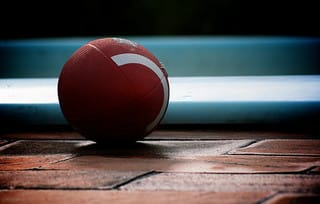Despite persistent hostility to charter school expansion in most states, there remains one aspect of charter schooling that fails to get the attention it deserves: athletics.
The limitations on charter school students’ access to sports penalize children and parents for choosing an alternative to a traditional public school. With considerable research showing the positive contribution that athletics participation has towards academic success, depriving students of this opportunity is not only unjust, it’s counterproductive to raising student achievement.
 The actions of policymakers against charter school athletics are emblematic of the treatment of charters at large. Photo by Anderson Mancini. |
It is no coincidence that in areas where charter schools have proven academically effective and where they capture a larger share of the student population—Washington, DC, and New Orleans, in particular—charter school sports teams are finally gaining acceptance. An editorial in the Washington Post praised athletics director Clark Ray and noted that a “cruel inequity is coming to an end with the long-overdue decision by city officials to create an equal playing field for the growing numbers of charter school student-athletes.” This coming school year, DC will finally allow its charter-school teams, including some the best football squads in the area, to compete for city championships. One such school, Friendship Collegiate Academy, had two DC All-Met Players this season and lost only one game despite playing some of the best teams in the country—notwithstanding the industrial containers they used as a locker room and the orange traffic cones that doubled as tackling dummies.
In Louisiana, the high school athletic association allows students to compete regardless of whether they attend traditional or charter schools. Louisiana High School Athletic Association (LHSAA) Executive Director Kenny Henderson put it bluntly, “We want to treat every school the same. But it’s getting more and more difficult to do.” Many charters simply lack the resources necessary to compete in expensive sports such as football. “Some of these schools just didn’t realize how much funding it takes to field teams,” Henderson said. Instead of penalizing the charter-school students, the LHSAA has decided to allow two schools, Carver and Cohen, to field cooperative teams in the interim.
Charter school athletic teams face bureaucratic red tape and impediments in most attempts to compete on an even playing field.
Still, charter school athletic teams face bureaucratic red tape and impediments in most attempts to compete on an even playing field with their traditional-school counterparts. North Carolina mandates separate athletic leagues designed to divide traditional and charter public schools. In New York, athletic bureaucracies penalize charter schools and treat them as private schools. The Albany Times-Union reported on Green Tech, an all-boys charter school with only 263 students that was placed in a classification level for football which included schools with over 1,000 students. Opponents claim that because the school can enroll students from across the district it gives them an unfair advantage in competition. As a New York athletic representative said, “being a charter school, the state treats them like a private school.” This despite the fact that all students who attend Green Tech are from the Albany school district and the school has open enrollment.
The actions of policymakers in North Carolina and New York against charter school athletics are emblematic of the treatment of charter schools at large and a disservice to students seeking to expand their talents beyond the classroom. However, in school districts in Washington, DC, and New Orleans responsible school leaders, like Kenny Henderson and Clark Ray, are making pragmatic decisions that encourage student achievement and ensure equitable treatment for all students. Student opportunities, on and off the field, must have support from school leaders and it is encouraging to see some stepping up to the plate.
